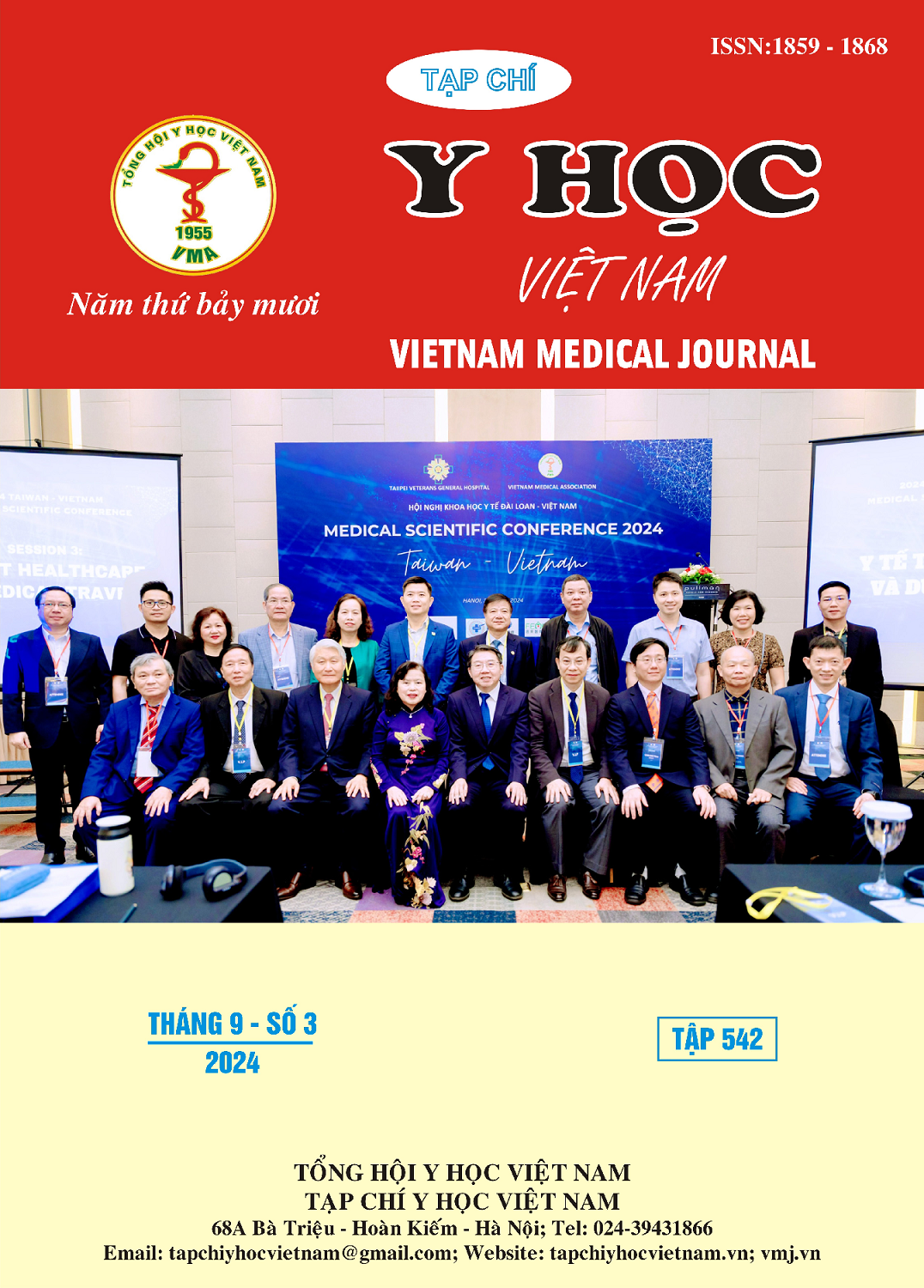CORRELATION OF LOWER RADIAL T-SCORE WITH T-SCORE OF FEMORAL NECK AND LUMBAR SPINE IN EVALUATE THE OSTEOPOROSIS IN THE ELDERLY
Main Article Content
Abstract
Objective: This study aims to use the DEXA bone density measurement method at the wrist bone to diagnose osteoporosis and investigate the relationship between bone density at the radius and the femoral neck and lumbar spine in elderly patients. Methods: Cross-sectional descriptive study with 60 patients over 60 years old, measuring bone density at the lumbar spine, femur and radius using the DEXA method at Thong Nhat Hospital from October 2023 to December 2023. Results: The average age of patients was 70.4 ± 6.35 years old, with women accounting for 81.67%. The rate of osteoporosis was 41.67% when measured at the spine and femur. The T-score of the mid-radius (MID) was linearly correlated with the T-score of the femur and spine (p < 0.001). The T-score at the 1/3 distal radius (1/3R) position had a linear correlation with the T-score of the lumbar spine and did not correlate with the position of the femoral neck. The T-score at the ultra-distal radius (UDR) location did not have a linear correlation with the T-score at the femur and lumbar spine. Conclusion: Measuring bone density at the radial site using the DEXA method can provide useful information in the diagnosis of osteoporosis. The study shows the relationship between the T-score of the radius and other locations such as the lumbar spine and femur, contributing to improving the effectiveness of diagnosing osteoporosis in the elderly.
Article Details
Keywords
Bone Density, Osteoporosis Diagnosis, DEXA, Radius T-score
References
2. Gullberg B, Johnell O, Kanis JA. World-wide projections for hip fracture. Osteoporos Int. 1997;7(5):407-13. doi:10.1007/pl00004148
3. Ward RJ, Roberts CC, Bencardino JT, et al. ACR Appropriateness Criteria ® Osteoporosis and Bone Mineral Density. Journal of the American College of Radiology. 2017-05-01 2017;14(5): S189-S202. doi:10.1016/j.jacr. 2017.02.018
4. AGENCY IAE. Dual Energy X Ray Absorptiometry for Bone Mineral Density and Body Composition Assessment. 2011.
5. Tripto-Shkolnik L, Vered I, Peltz-Sinvani N, Kowal D, Goldshtein I. Bone Mineral Density of the 1/3 Radius Refines Osteoporosis Diagnosis, Correlates With Prevalent Fractures, and Enhances Fracture Risk Estimates. Endocrine Practice. 2021/05/01/ 2021;27(5):408-412. doi:https://doi.org/10.1016/j.eprac.2020.12.010
6. Ji MX, Yu Q. Primary osteoporosis in postmenopausal women. Chronic Diseases and Translational Medicine. 2015-03-01 2015;1(1):9-13. doi:10.1016/j.cdtm.2015.02.006
7. Miyamura S, Kuriyama K, Ebina K, et al. Utility of Distal Forearm DXA as a Screening Tool for Primary Osteoporotic Fragility Fractures of the Distal Radius: A Case-Control Study. JBJS Open Access. 2020;5(1): e0036. doi:10.2106/jbjs. Oa.19.00036
8. Schwarz Y, Goldshtein I, Friedman YE, et al. Bone mineral density of the ultra-distal radius: are we ignoring valuable information? Arch Osteoporos. Feb 2 2023;18(1): 28. doi:10.1007/ s11657-023-01218-w
9. Ma SB, Lee SK, An YS, Kim W-S, Choy WS. The clinical necessity of a distal forearm DEXA scan for predicting distal radius fracture in elderly females: a retrospective case-control study. BMC Musculoskeletal Disorders. 2023-03-09 2023; 24(1)doi:10.1186/s12891-023-06265-5
10. Eastell R, Rosen CJ, Black DM, Cheung AM, Murad MH, Shoback D. Pharmacological Management of Osteoporosis in Postmenopausal Women: An Endocrine Society Clinical Practice Guideline. The Journal of Clinical Endocrinology & Metabolism. 2019-05-01 2019;104(5):1595-1622. doi:10.1210/jc.2019-00221.


